We’re Looking at a Retirement Crisis, Because We’re Gambling Unnecessarily
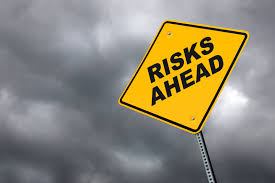
We’re facing a very serious retirement crisis in this country.
A recent Congressional Survey of Consumer Finances showed that the average 401(k) balance for 65 year olds in this country is roughly $61,000. That’s about two years worth of retirement income, at best, but statistically, those retirees will need about 17 years worth of retirement income after age 65. That’s a crisis by any standard.
A recent survey conducted by Harris Interactive for Wells Fargo, titled the Wells Fargo Middle Class Retirement Study, showed how bleak the picture is with 37 percent saying they don’t ever expect to retire, and instead will have to “work until I’m too sick or die.” And 48 percent say they are not confident they will be able to save enough for a comfortable retirement.
An economist appearing in a recent documentary on retirement facetiously said his retirement plan includes “winning the lottery.” And that would be funny were it not true.
We’ve been lied to… and as a result we’re exposed to far too much risk.
Here’s the real situation…
The forces of supply and demand are what drive the prices of goods or services, but today, the Big Kahuna is demand. When demand for something goes up, prices follow in a hurry… and when demand falls, prices fall fast.
That’s what’s happened to our housing market… the only difference is that when you’re talking homes, demand is really dependent on our ability to express it… and that means being able to get loans.
When investors fled the market for residential mortgage-backed securities in the latter part of 2007, after the ratings agencies downgraded the ratings on 1032 bond issues beginning on July 9th of that year, loans became scarce and then non-existent, and home prices fell off a cliff.
Today, we can’t bring the demand back for numerous reasons, one of which being that we can’t bring back the private securitization market and that means government the lender of first, last and only resort.
We can’t bring back the private securitization market because it ended as a result of investors losing trust… specifically trust in the ratings agencies, but also in Wall Street’s investment banks and our financial regulators in general. And once you lose trust, you just don’t get it back… period.
We didn’t act quickly enough to provide the mortgage financing that was gone, and by the time we did, home prices in many previously high demand areas had been cut in half. So now, well over a third of the market is underwater, effectively underwater, or unable to sell at a price that would provide them with the 20 percent down payment needed to finance their next home.
There are the demographic trends that would have impacted our housing markets regardless of the financial crisis, such the growing population of baby–boomers marching into their retirement years and therefore having less natural demand for buying homes.
Young people aren’t showing up as first time buyers like they used to either, in part because they’re saddled with unprecedented levels of student loan debt, but also because many can’t find good jobs and lack the down payment required to qualify today. I’d also imagine that having seen so many lose homes to foreclosure, many are in no hurry to follow suit.
And then there’s the ongoing foreclosure crisis, the looming shadow inventory and upcoming HELOC adjustments that are all likely to continue adding fuel to the foreclosure wildfire.
Those factors, among others, make it impossible for aggregate demand for residential real estate to increase significantly any time in the near future and therefore home prices cannot be expected to rise in any meaningful or sustainable way any time soon. Of course, as I’ve said many times over the last few years, nothing goes down in a straight line, and it’s easy to be fooled by stimulus.
So, that’s the housing story and there’s nothing we can do about it at this point, even if we wanted to, which we clearly don’t. The lesson here should be that investing is very risky, whether we’re talking about real estate… or the stock market.

Gambling in the Stock Market…
Ever since the mid-1980s, we’ve been buying Wall Street’s conventional wisdom that investing in equities, as long as properly diversified, is the only way to go when saving for retirement. Financial advisors will support the argument for investment in equities with an endless supply of charts and graphs all illustrating annual returns from an investment in the equities market over different timeframes.
It’s all just utter nonsense. I don’t care what the timeframes are or what someone says about average annual returns. We simply cannot depend on the stock market to produce the consistent returns we need over 10, 15 or even 20 years.
Baby boomers are the first generation attempting to prepare for retirement based largely on the performance of investments in the stock market. My grandmother, who was born in 1899 and passed away in 1994, never used the word investing when talking about the stock market. Instead, she would refer to it as gambling. It took me a while to come to the realization that she was right.
Wall Street has managed to get us entirely focused on annual return on investment (“ROI”) as being the most important metric… and so we chase ROI hoping that we’ll somehow pick the right fund or the right stock and come away with the prized higher returns on our investment. And when we do manage to get lucky, we tell ourselves we’ve made money.
Remember the definition of a bull market? It’s a temporary condition that makes investors feel like geniuses. Well, that describes us, I’m afraid. When it comes to investing in the stock market, well… we’re delusional. We lie to ourselves and believe it. The truth is… we are terrible at investing.
Let’s say four people each invested $100 a month starting in 1998 and ending in 2008. One person chose to invest in an equity fund, one in a bond fund, one in a balanced fund (stocks and bonds) and the last person decided to stick the $100 in his or her mattress.
Want to know which one would have come out ahead? It doesn’t matter. What does matter is that the mattress came in second. (Source: Morningstar.)
And here’s another telling set of numbers from the iconic John C. Bogle, the founder and retired CEO of The Vanguard Group. Looking at average annual returns for the 25 year period between 1980 – 2005…
The S&P 500 Index Fund: 12.3%
Mutual Funds: 10%
Individual Investor: 7.3%
Yeah, we’re geniuses all right. We managed to under perform a passive investment in the S&P 500 by FIVE PERCENT A YEAR for 25 years. That’s some brilliant investing right there.
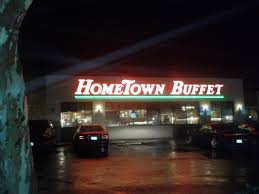
We’re just like Buffet… Hometown Buffet, not Warren.
If you’ve spent any time at all choosing your investments over the last 25 years, not only did you waste your time, but you cost yourself money too, because you’d have come out five points ahead each year by simply putting your money into the S&P and never thinking about it again.
Why do we underperform like that? Because we buy high and sell low, that’s why.
We poured money into equities in 1999 and 2000 at the pinnacle of the market… and fled the market en masse in 2008, when the S&P fell by 38%. Some of that is simply the result of herd behavior… it’s easier to jump in when everyone else is and the market is flying high, but that’s the worst time to jump.
Another reason we’re doomed to buy high is that many of us have jobs that correlate with the stock market’s performance. People that work in financial services, real estate, law, technology, consulting, among others, all tend to have extra money to invest when the market is up. When the market is down, however, they tend to need extra money, so they not only don’t have the money to take advantage of the lower prices, but they often have to sell to generate needed cash.

The Secret…
The secret is… when trying to accumulate wealth, ROI almost doesn’t matter. That’s right… it may sound counter-intuitive but just it doesn’t matter whether you earn a 4, 6, 8 or 10 percent annual return on your investments. What matters is eliminating the real obstacle to accumulating wealth over time… market downturns.
As long as you’re investing in the stock market it doesn’t matter whether you earned 18 percent for the year, or 12 percent… or even five percent… because it’s the down years that kill you.
Let’s say you started investing in the market in 2000, a nice round number. You read that over 25 years, the average annual return from a passive investment in the S&P 500 Index has been 12.3%… so you put your money into the Vanguard S&P 500 Index Fund.
Well, in 2000 you would have lost 9.11%. In 2001, you would have lost an additional 11.89%. And then in 2003, you would have lost 22.10%. So, you’d be down by 43% after three years in a fund whose average return over the 25 years between 1980 and 2005 was 12.3%.
You see, it really didn’t matter what your ROI was in 1997, 1998 and 1999, because by 2003, you would have watched your savings get cut by almost half. And once something drops by 50%, how much does it have to go up to break even? The answer is 100%… it has to double.
Wall Street’s answer to the stock market’s downside risk is another lie we’ve all been told for the last 30 plus years: diversification will protect you. Now, I don’t mean that diversification doesn’t reduce stock market risk in theory. I’m saying that for the average investor it’s impossible to achieve… as in, it can’t really be done.
When people tell me they’re diversified, I reply by saying, “Really? What do you own, timber?” And the answer is no, of course not. Like everyone else, they own large caps, small caps, international and maybe a few bonds they don’t understand all that well. When the crash comes, everything pretty much correlates and they get wiped out.

Redefining Diversification…
The most significant risk to retirement income isn’t addressed by diversification, because diversification, as we’ve all been taught to define it, only applies to asset class. But in retirement, it’s income we’re all worried about…. How much money you can get each month once you’ve stopped getting a paycheck from work?
The biggest risk to income is taxes. And in case you haven’t been paying attention these last few years, it seems pretty clear that our elected leaders are going to raise taxes as soon as they possible can.
Since taxes are the biggest bite out of anyone’s income by far, to protect income from the threat of higher taxes in future, we need to apply the concept of diversification to the sources of our retirement income and create a bucket of funds that can be accessed on a tax-free basis during our retirement years.
Yet, most people have all of their retirement savings in tax-deferred vehicles, such as a 401(k) or IRA, and the income that gets withdrawn from those vehicles will be taxable as ordinary income. So, not only do we have our savings in accounts subject to the downside risk of the stock market, but we also invest in vehicles that will provide income at risk of higher tax rates in future years.
It’s like we’re “Risk Junkies.” What could be riskier than betting on the stock market going up and future tax rates staying the same or going down? Are we nuts? The answer is… we’ve been lied to.
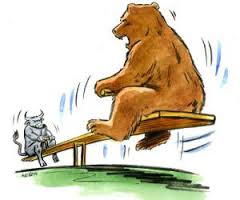
Aging population, interest rates and taxes to reduce demand for equities…
If you’re still comfortable with all of your retirement savings in the stock market, consider the following three points…
First of all, 78 million baby-boomers are aging. Most have had the majority of their savings in the stock market for last 30-odd years, whether though the direct purchase of individual shares or as a passive investor in mutual funds held in IRAs and 401(k) plans.
As this group ages into retirement, however, they’ll be pulling money out of their retirement plans. Some of that money will be used for retirement income, and some will move away from equities and into safer savings vehicles and annuities. That means fewer dollars in the stock market… or, another way to say it is “reduced demand for equities.” And when demand falls… so does price.
Secondly, the capital gains tax is about as low as its ever been and going forward it certainly won’t be any lower. In fact, at some point in the not too distant future, the rate is likely to go up, at least on the highest earners (who are also the people with the most money in the market by the way). A higher capital gains rate reduces the attractiveness of investing in the stock market to some degree, and again, that portends less money in the market, which means lower aggregate demand for stocks.
Third, interest rates are sure to rise at some point in the coming years, even more certainly than taxes will increase on higher earners. When they do, corporate earnings forecasts will take a hit, which will lead to a pull back in stock prices.
And these are only a few of the risks inherent to investing in the stock market today… there are plenty of others. The Fed’s eventual pull back of its quantitative easing program is destined to send stocks lower… the only question is by how much. The financial stability of the EU is a long way from being stable. And the list could go on and on.
Most people today don’t know or don’t remember, but between 1966 – 1982, the stock market’s average annual real rate of return compounded annually was -6% per year… FOR 16 YEARS. “That’s a near market and it’s something we may experience again.” (Source: Art Laffer Ph.D.)
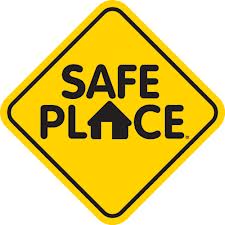
The Answer is Simple, Straightforward and Safe…
There should be no question that a portfolio’s value can be devastated by losses that occur during the 10-20 years before retirement. That’s when most people have the most money at risk, and the least number of years to make up for losses should they occur.
If you’re 45 years old or older, I don’t think you need anyone to tell you which stocks or funds to invest in… I think you need someone to help you avoid risk. Today, it’s not about return ON investment… it’s about return OF investment. It shouldn’t be difficult to see it… if you can avoid the risk of market downturns, and the risk of higher taxes in future years… you can’t help but come out ahead of not doing so.
There’s only one financial vehicle that can offer you that double-sided protection, and it’s offered by the insurance industry, which is the other side of Wall Street… the boring side… the safer side.
When you invest inside an indexed universal life policy (IUL”), you participate in the market’s ups, but not in the downs. Depending on the policy, for example, if the S&P were to go up, you’d earn returns up to 12-13%. But if the S&P dropped by double digits, your return would never be lower than 2 percent in some policies and 0% in others… but either way there’s no downside risk, only upside.
You can take money out of a properly structured IUL policy tax-free, so it can create a source of tax-free retirement income or you can use the money however you’d like whenever you’d like. For example, saving for college inside a well-structured IUL policy means you don’t need to save $66,000 to pay a tuition bill of $33,000. Which number sounds better to you?
And because it’s an insurance policy, there’s also a death benefit, so it creates an immediate estate. Should you die unexpectedly, the death benefit will ensure that the money is there to pay college tuition, even though you hadn’t saved enough before you died, as one example.
I know there are plenty of financial advisors who will tell you not to invest inside an insurance policy. They’ll claim that the costs of insurance diminish your potential ROI. See what I mean? It’s always the pursuit of ROI, when it’s never been ROI that mattered most… it’s market downturns that kill you… who cares whether your ROI is a few points higher, here and there?
When the market drops by 43%, as it did during 2000, 2001 and 2002, you sure won’t care whether you earned 5, 7, or even 10% during the preceding years… those gains will all be gone anyway.
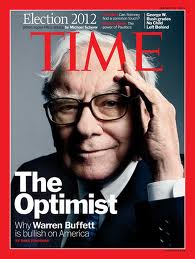
One Last Thing…
And if that hasn’t moved you from your investment in equities, I want to leave you with something written by Warren Buffett in his 2007-08 Letter to Berkshire Hathaway shareholders…
“Over the last century, the Dow went from 66 to 11,497. While this may seem like enormous growth on the surface, compounded annually, it’s just 5.3% per year. In this century, if investors matched that return, the Dow would close at 2,000,000 by year-end 2009.
And anyone who expects to earn 10% annually from equities during this century is implicitly forecasting the Dow to reach 24,000,000 by the year 2100.
If your advisor talks to you about such double-digit returns from equities going forward, explain this math to him… not that it will faze him. Many helpers are apparently direct descendants of the Queen in Alice in Wonderland who said…
Why, sometimes I’ve believed as many as six impossible things before breakfast.”
And he’s considered an “optimist.”
It’s time to stop believing impossible things… it’s time to wake up to the truth about our ability to retire or save while entirely exposed to market risk and the risk of higher taxes.
It’s time to talk about playing it safe… to transform some portion of your retirement savings into safe money. But, by all means… leave some available for gambling.
Viva Las Vegas!
Mandelman out.


